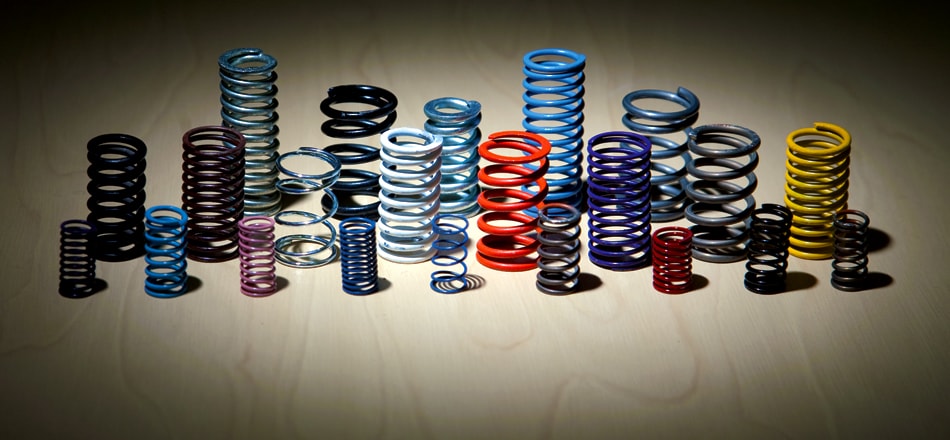Yes, coil springs can wear out over time due to factors like stress, fatigue, and corrosion. Regular inspection and maintenance are crucial to prolong their lifespan and ensure optimal performance in mechanical systems. Proper care helps mitigate potential failures, preserving the efficiency and reliability of coil springs across various applications.
Do coil springs wear out?
Yes, coil springs can wear out over time due to factors like stress, fatigue, and corrosion. Regular inspection and maintenance can help prolong their lifespan and ensure optimal performance in mechanical systems.
Coil springs are vital components in various mechanical systems, providing essential support and flexibility. Understanding the factors that influence their longevity is crucial for ensuring the reliability and efficiency of these systems.
Let’s take a look into the intricate dynamics of coil spring wear and deterioration.
Role of Coil Springs in Mechanical Systems
Coil springs play a vital role by absorbing and storing mechanical energy, ensuring stability and support. Whether in industrial machinery or household appliances, coil springs enable smooth operation while reducing the impact of external forces. Their ability to manage energy transfer efficiently enhances overall system performance and longevity.
With their versatility in accommodating various loads and conditions, coil springs are essential components in modern engineering applications.
Types of Materials Used in Coil Spring Manufacturing
Manufacturers employ a diverse array of materials in the production of coil springs, each boasting unique properties tailored to specific performance demands.
- High-carbon steel, known for its exceptional strength and resilience, is often favored for applications requiring robust support and durability.
- Alloy steel blends offer versatility, combining strength with flexibility to withstand varying loads and conditions.
- Stainless steel, prized for its corrosion resistance, finds utility in environments prone to moisture and chemical exposure.
- Meanwhile, specialty alloys cater to niche applications, providing customized solutions to meet stringent performance criteria.
The selection of material hinges on meticulous assessment of load requirements, environmental factors, and desired longevity, ensuring that coil springs are engineered to deliver optimal performance and reliability in diverse operational settings.
Factors Contributing to Coil Spring Deterioration
The wear and deterioration of coil springs result from a multitude of factors that accumulate over time.
- Cyclic loading, a repetitive application of force, gradually weakens the spring material, leading to diminished performance.
- Corrosion, caused by chemical reactions, can eat away at the surface of the springs, further compromising their structural integrity.
- Stress concentration, often exacerbated by improper design or installation, intensifies localized strain, hastening wear and potential failure.
- Environmental elements like temperature fluctuations and exposure to corrosive substances exacerbate these issues, exacerbating the degradation of coil springs and necessitating proactive maintenance measures.
Indicators of Worn-Out Coil Springs
Detecting signs of worn-out coil springs is essential to prevent system failures and potential safety risks. Common indicators of wear include sagging, diminished load-bearing capacity, and unusual noises such as squeaking or creaking.
Early identification of these signs through thorough visual inspection and functional testing is critical to ensuring system reliability and preventing costly breakdowns. Regular maintenance practices that include inspecting coil springs for signs of wear can help address issues proactively and extend the lifespan of mechanical systems.
Strategies to Prolong Coil Spring Lifespan
Ensuring the longevity of coil springs and sustaining system reliability necessitates the implementation of preventive measures. These measures encompass adhering to regular inspection and maintenance schedules, applying adequate lubrication, and promptly addressing any indications of wear or damage.
Moreover, prioritizing the selection of high-quality springs and executing proper installation practices are paramount for ensuring sustained performance over time.
By proactively managing these aspects, businesses can optimize the functionality and durability of mechanical systems integrating coil springs.
Importance of Regular Inspection and Maintenance
Regular inspection and maintenance play a vital role in upholding the functionality and safety of coil springs within mechanical systems. This entails thorough assessments to detect signs of wear, corrosion, or fatigue, along with verifying correct alignment and load distribution.
Applying appropriate lubrication and corrosion protection measures as required can significantly prolong the lifespan of coil springs, ensuring continued system performance and safety.
Finding Quality Compressor Parts and Compression Springs
Looking for reliable compressor parts and compression springs?
KB Delta offers a comprehensive range of high-quality compressor parts and accessories to meet your needs.
Contact us today to learn more about our products and ensure the optimal performance of your mechanical systems and applications.
Conclusion
In conclusion, coil springs can indeed wear out over time due to various factors such as stress, fatigue, and corrosion. Understanding these wear factors and implementing preventive maintenance measures are essential for prolonging spring lifespan and ensuring the continued functionality of mechanical systems.
By staying proactive and attentive to signs of wear, businesses can mitigate risks and maintain operational efficiency.

